Mountain Biking in Yunnan Province, China
 Shivering into the fading orange glow of the late evening sunlight it stood before me; a mighty and towering dragon with a fearsome jagged back and tail. It was an ominous sight and I could tell that it was all fired up and ready to do battle with me. This was no ordinary dragon either; it was a sacred Chinese dragon—The Jade Dragon is a huge 5,000-metre plus tall, glaciated mountain that sits high above the already high altitude historic city of Lijiang, in the Yunnan province of China’s extreme southwest.
Shivering into the fading orange glow of the late evening sunlight it stood before me; a mighty and towering dragon with a fearsome jagged back and tail. It was an ominous sight and I could tell that it was all fired up and ready to do battle with me. This was no ordinary dragon either; it was a sacred Chinese dragon—The Jade Dragon is a huge 5,000-metre plus tall, glaciated mountain that sits high above the already high altitude historic city of Lijiang, in the Yunnan province of China’s extreme southwest.
Lugging a backpack full of cameras, a broken wheel-along bag and a shoulder bruising bike bag, I’d negotiated the convoluted route out from the train to the station entrance. It had been one of those days, the kind where almost everything that could go wrong does go wrong, but I’d made it.
Logistical Hurdles
A few hours earlier I’d battled through a stampede of locals all fighting to get to their assigned seat on the overcrowded train from Dali to Lijiang. My seat had been pre-booked but the scary lady at the train door would not allow me on. As there was no point attempting to reason in English and the train was departing, I simply went to the next carriage and dragged my bike bag through the crowds to my seat, which turned out to be an already occupied six-up bunk. Hauling my bike onto the top bunk I took standing room only, as it seemed that two other people had also been allotted my seat. One guy spoke a little English and pointed out that I was two days early for my journey—it was the 17th and I had a ticket for the same train two days later. This lead to a whole lot of paperwork and finger waving at the other end, but we got there in the end.
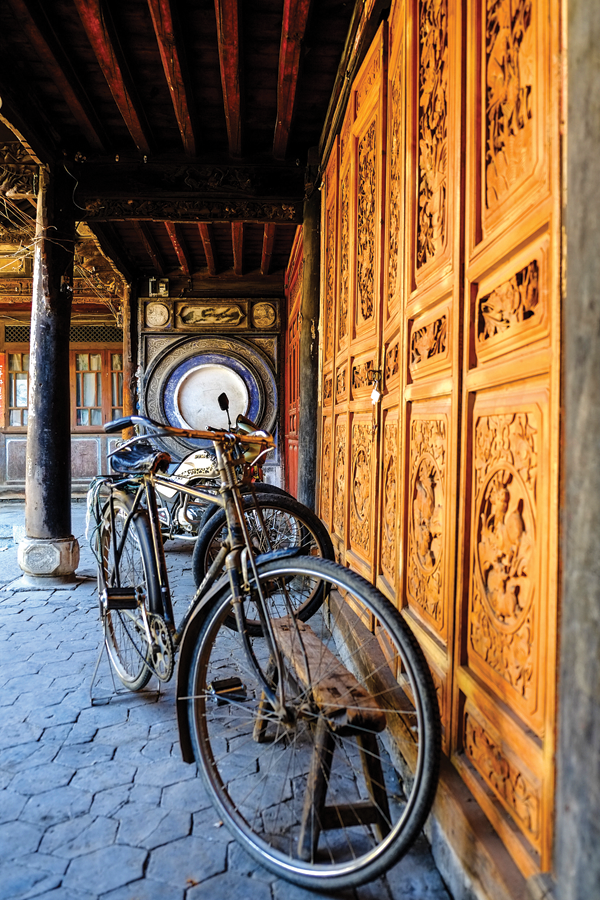
It doesn’t take long to realise that language is a huge barrier in such regions; in fact it had been a major issue in the planning of the trip. There’s simply no information on riding and facilities in the area, or almost none. On the ground, with a little sideways thinking and improvisation, plus a phone to take pictures of what you want (or of any Chinese addresses) and most things can be overcome. With these things figured out it all of a sudden became surprisingly easy, making the two months of pre-trip planning seem a little excessive.
Waffling on about a train journey while cringing over open plan communal squat toilets and spitting in the streets may seemingly hold little relevance to the riding, yet it’s as much a part of the experience in a place such as Yunnan—perhaps even more so. A journey here is an adventure as much as it is a ride, and taking it all in and overcoming the cultural and linguistic obstacles with an open mind is what really makes it such a tantalising experience.
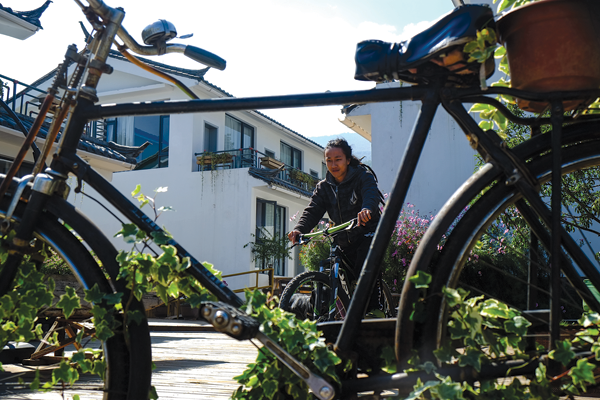
During the previous few days I’d made my way by planes, trains and automobiles to Lijiang, and had seen some agonisingly tempting trails from the windows of these non-stop carriages, especially around the Dinosaur Valley region between the regional capital of Kunming and Dali. While the potential is apparent, there’s no information out there. You’d really need to hire a private car and a driver to explore the region properly. Instead I’d hooked up with the recently established Bike Lijiang outfit; they seemed to have a pretty decent set-up and knowledge of the riding around the city, and way beyond too.
Despite being just a short hour-and-a-half hop away from Thailand and having land borders northern Laos, Myanmar and Vietnam, Yunnan’s northern sector also borders Tibet. If you didn’t know better you could easily confuse it with its northern neighbour; there’s the Himalayan ‘foothills’, a sizable Tibetan population and richly varied tribal culture. It gives the region a unique feel, one that differs with every single train or bus journey—it truly is a fascinating place.

Most of the region sits above 2,000 metres, with Lijiang being close to 2,500 metres. So it’s worth doing a few easy acclimatisation rides before duking it out with the big boys, who will knock you out with their 4,000-metre plus mega climbs, of which there are plenty.
With a couple of days’ worth of lowland city rim and countryside exploration bagged, it was time to head for the hills and take a swipe at the Jade Dragons tail. As the mountain itself is a National Park, riding on its slopes is a sensitive issue and not worth the potential confrontation, so Jason (Rastafarian head barista and guide at Bike Lijiang) decided on a tough route around the back of the mountain.
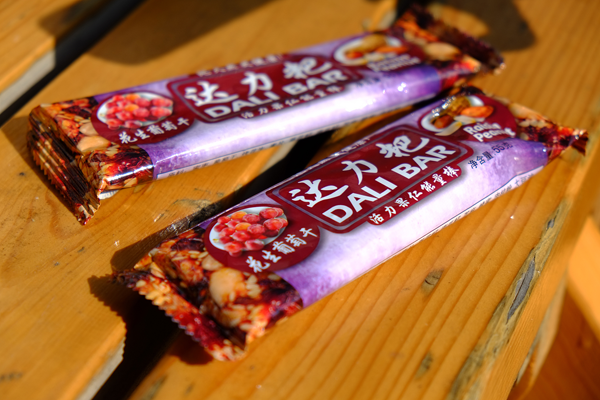
Riding High
Following a mixture of pleasant country back roads, we hit the slopes to the west of the dragon and began the 16km road climb to a nearby Tibetan monastery—draped with prayer flags, it’s a fascinating place that echoes with the chants of the resident monks. The ministry has been here for hundreds of years and they’ve recently come back to life following the demise of the ‘cultural revolution’, which all but destroyed them and the rich Buddhist culture that abounds in the region.
Despite matching most Tour de France climbs stats wise, with the added handicap of the high-altitude thin air thrown in, the road section was more of a warm-up to the real ride. It’s from here on in that the riding becomes something beyond normal.
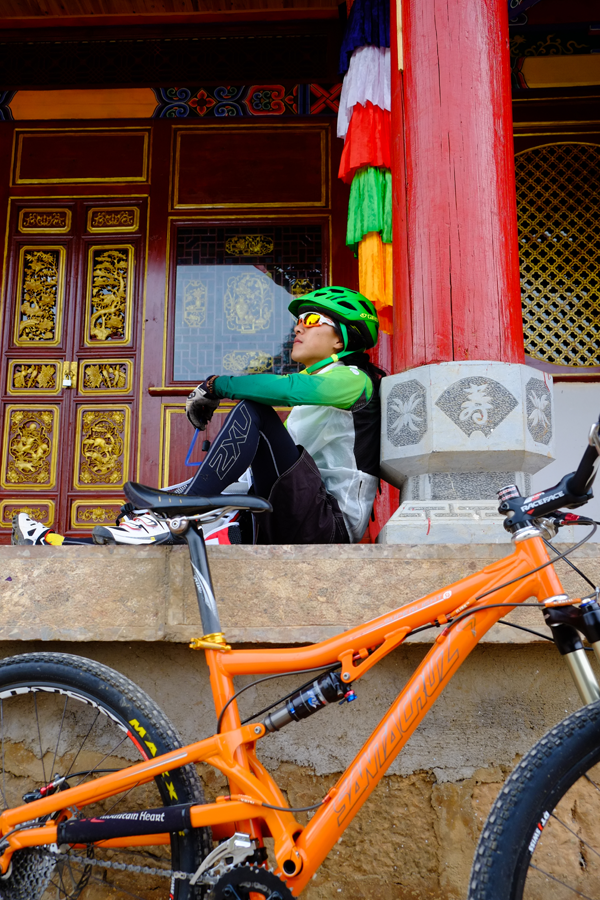
Fading from a broken grey colour to dusty orange, the trail leads us onto a high plateau where yaks graze in open grassland beside a remote lake. There’s nothing up here apart from the yaks and the occasional Naxi settlement (the local tribal people). For a moment I stop and savour the setting—it’s a scene that could be straight out of a National Geographic documentary. That’s the amazing thing about Yunnan; it’s wild and virtually untamed, yet with a little perseverance it’s quite accessible.
Climbing higher still, the jeep track wound its way through one of the most colourful autumn forests I’ve seen in a long time before emerging behind the dominant mist shrouded spine of the Jade Dragon—a real sight to behold.
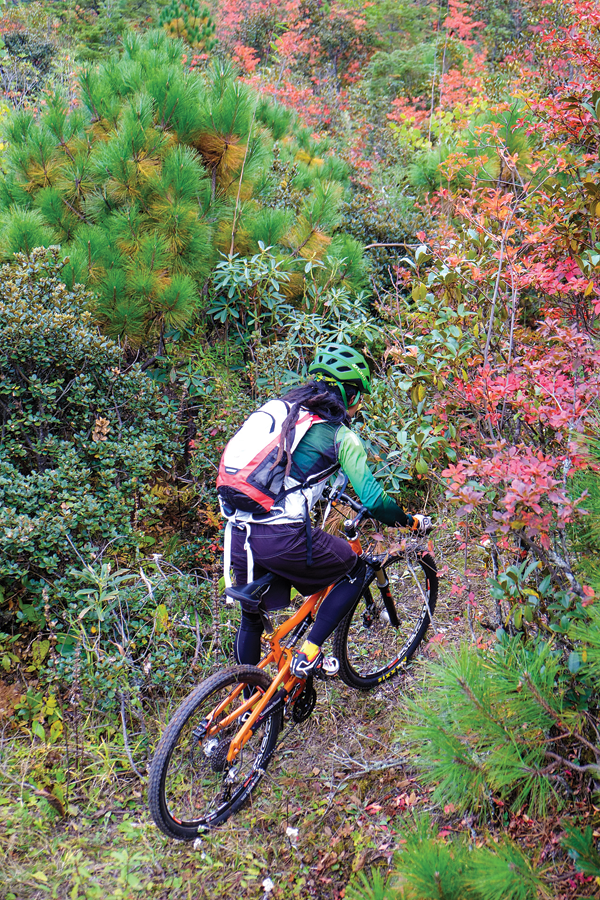
Late afternoon was approaching and it was getting cold; time to vacate the mountain and head for the comfort of a log fire and hot local tea. As time was short we had to skip the prime singletrack sections, but from the grabs we did ride as well as the stories offered by my guide, I can safely say that there’s some truly wild rock-strewn high-mountain adventures to be had. You can even take on an old mule-trail all the way across to the Tiger Leaping Gorge; an epic trail that’s rarely tackled by mountain bikes.
Over the next few days we set off on a back road journey north to Shangri La, stopping along the way to sample the prime trails. Most of these contrasted totally with the Lijiang experience yet were equally spectacular.
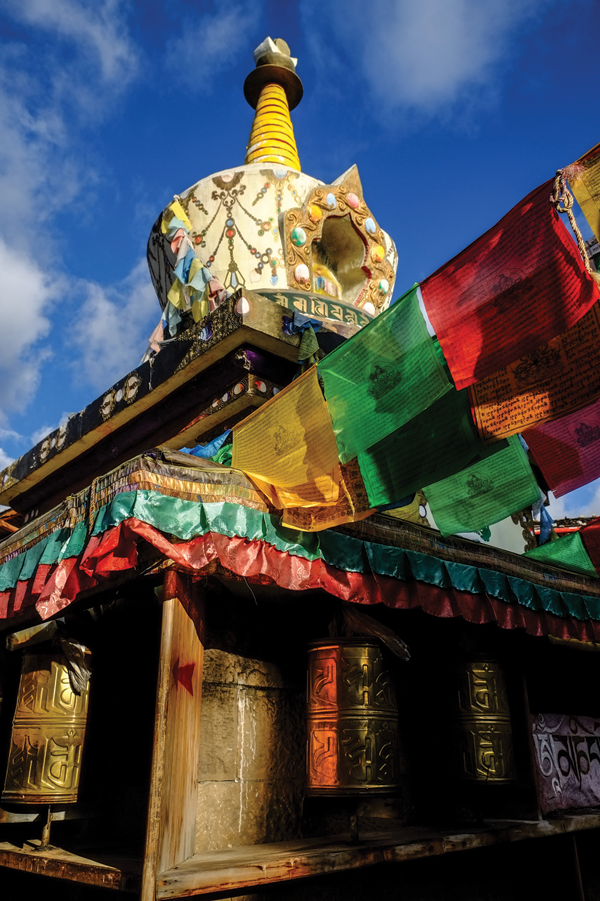
After pootling around the high prairielands of Shangri La, we headed south with a series of car, minivan and bus trips. There was also a road ride and a trek through Tiger Leaping Gorge. On this I veered slightly off-route and dropped in on the ancient market town of Shaxi, which just happened to be surrounded by rolling hills and paddy field singletrack. Doused in history, this was a great low-key riding destination and made a fascinating end to the journey.
On reflection, I can’t wait to return and head off-track some more; there’s plenty of trail out there and some impressive terrain to explore, it just seems that nobody knows where it is. Of course this is virtually guarantees an adventure if you’re game—put in the effort and this spectacular region will reward.
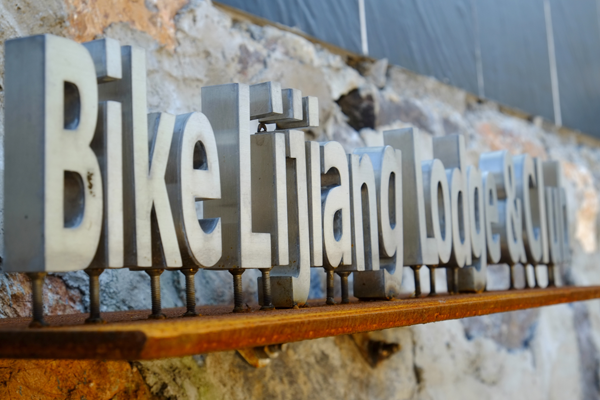
Getting There
Kunming is the major regional airport for Yunnan region. You can also connect with an expensive flight to Dali, Lijiang and Shangri La (Deqen Airport).
Kunming is a typical Chinese city, but after a long flight it’s worth stopping off for a night of rest here. From Kunming to Lijiang (via Dali and on to Shangri La) you can either take the train or an express bus (personally I would avoid the sleeper option).
Depending on the train or bus, this journey can take eight to 12 hours. I would seriously recommend stopping off in Dali for a day or two (there is some really nice road riding around Erhai Lake).
The train costs slightly less than the bus, but neither is expensive. If your bike is boxed then I would chose the VIP bus, as not all trains will take your bike at the same time as you and they are less frequent too.
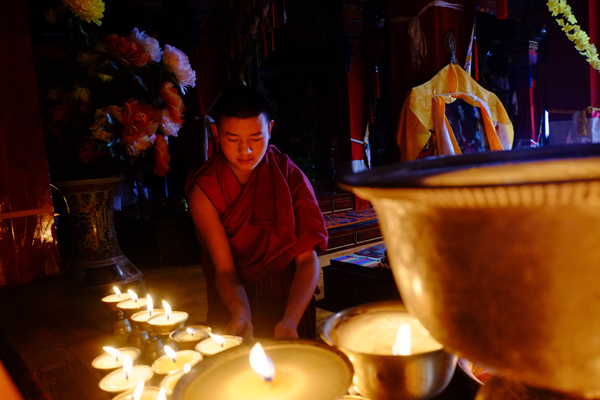
For details go to www.chinatravelguide.com
When to Go
The best time for riding is between October and April. It can be cold at night, but it’s dry and clear. May and June can be very humid, while July through to September is rainy season and is best avoided.
It also pays to avoid Chinese New Year (February) and Golden Week (October), as it can be very busy.
Accommodation
The Bike Lijiang Lodge is just out of the main city of Lijiang—overall this is a good thing. It’s a small complex with great facilities, including Trek 4300 disc brake equipped rental bikes and superb food (although oddly the cuisine is mostly Italian).
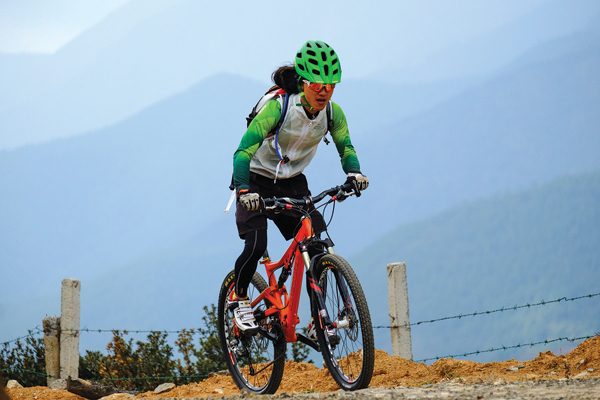
You’ll find great riding straight out of the lodge, and of course it has bike guides and information on tap—all essential to get the most out of the local riding. Check out www.bikelijiang.com
There are exceptionally good accommodation options all over Yunnan; but be sure to check their location—some are well out of range of anywhere you’d want to ride.
We stayed at the Jade Emu, a great hostel run by an Aussie expat. Check out www.jade-emu.com
In Kunming the Upland International Youth Hostel makes for a great budget option. You’ll find details on this and other options in Shaxi and Shangri La by going to www.hostelworld.com
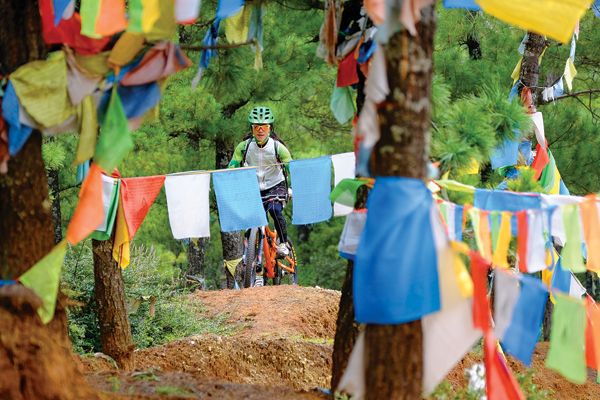
Costs
A reasonable hostel room with en suite costs around AU$35 while a bunk in a dorm is around $8. Something more upmarket such as Bike Lijiang will be around $90 per night but it’s well worth it and is negotiable for longer stays.
The bus trip from Kunming to Dali costs around $27 and little less from Dali to Lijiang.
Eating is an open-ended thing, as there are so many local and western options all around. Food prices are very low compared to Australia.
ATMs are available in all towns.
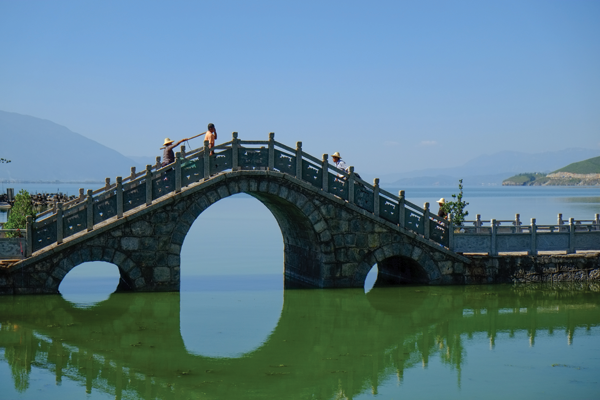
Bike Facilities
There are bike rental outlets and basic bike shops on every corner in Dali, Lijiang and even a few in Shangri La. The offerings are fine for a plod around town, and some even have reasonable options for a few days of touring, but they are not up for real off-road riding.
Bike Lijiang have near to new Trek hardtails for rent, but only on their trips. Otherwise take your own bike and any high-end spares you may need.
There is a Giant and a Merida outlet in Lijiang but they don’t have specialist MTB gear.
Handy Tips
- Travel light, take a compact bike bag (not a box) and be sure to carry some warm gear too.
- Be sure to allow time to acclimatise. Even Kunming is at almost 1,900 metres above sea level and it only gets higher as you go further north.
- Old town Lijiang is an unfriendly tourist trap; worth a look but little more. Shuhe and Baisha (both also in Lijiang) are much more interesting. Dali is also well worth a stop off, as is Shangri La and Shaxi.
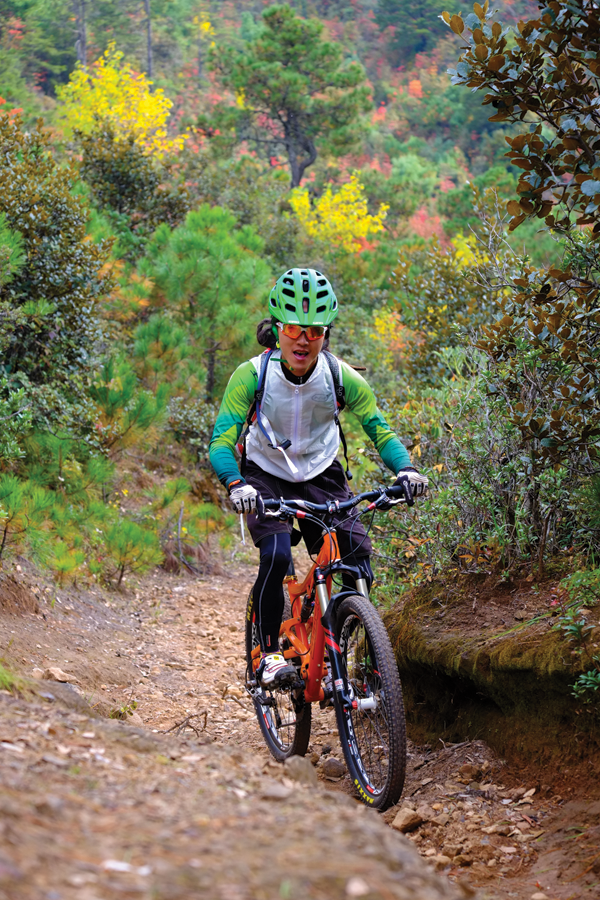
- Expect to be scammed by private car owners, taxi drivers and bus drivers. Strike your deal and take a phone picture of the amount agreed. Note exactly what they agreed to and ensure that they stick to it.
- Without a Chinese driving license you cannot rent a car. Private hire vehicles are a great way for a small groups with bikes to get around, just be sure to cover all bases. Expect to pay around $100 for a full day’s use of a minivan with a driver.
- Carry a smartphone; the calculator and camera will be invaluable. Take pictures of all addresses and names in Chinese, as English is not widely spoken outside of the main tourist areas.
- Many social media channels are blocked including Facebook, Twitter, Blogger, Google (Gmail is fine) and YouTube. Instagram works and you can post to Facebook from it via the mobile app. It can make for a refreshing break but can also be frustrating if you are not prepared. The Jade Emu has a VPN to enable access but it is slow (my VPN server was impossibly slow here).
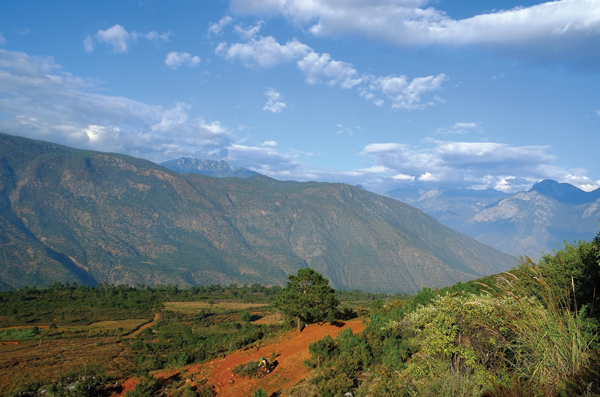
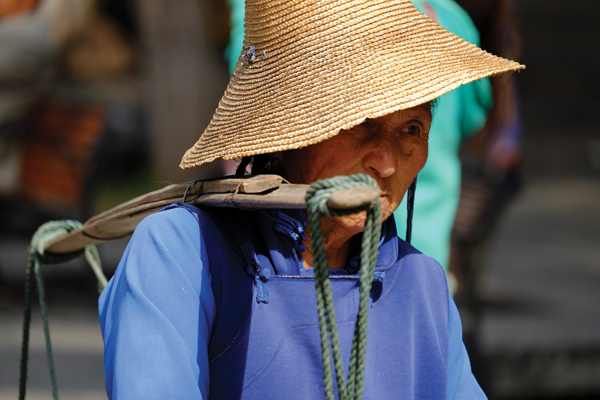
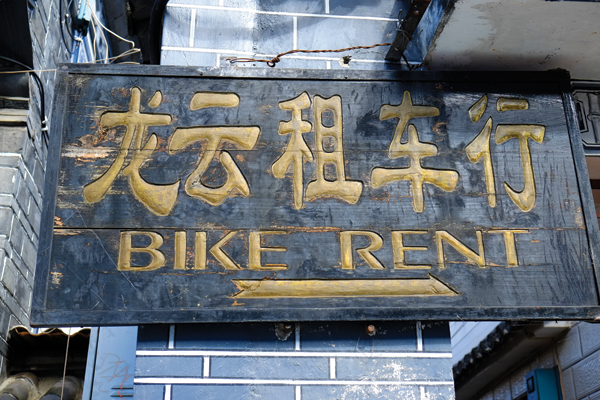

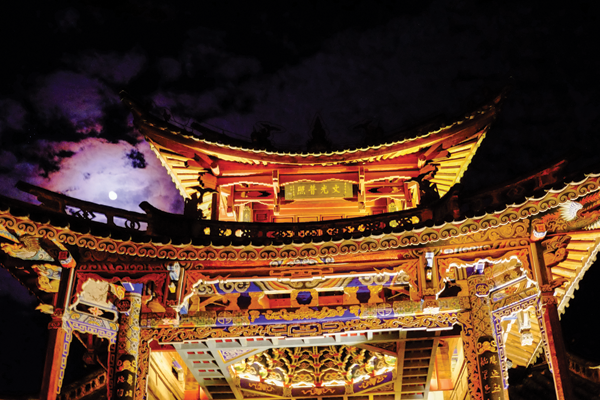
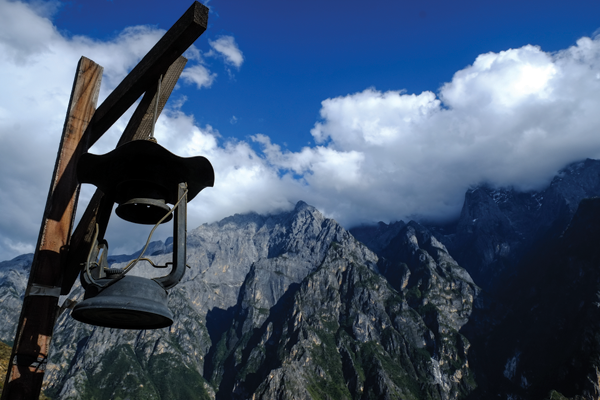
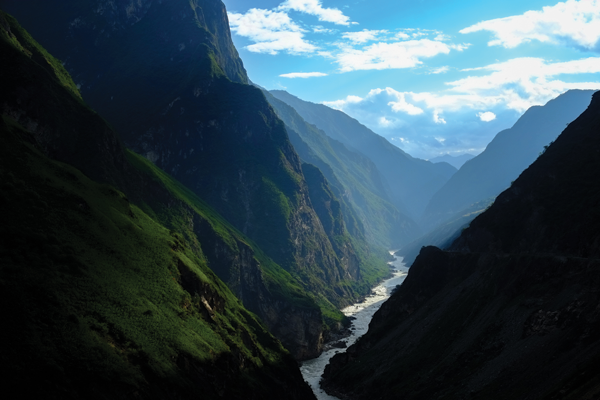


 Shivering into the fading orange glow of the late evening sunlight it stood before me; a mighty and towering dragon with a fearsome jagged back and tail. It was an ominous sight and I could tell that it was all fired up and ready to do battle with me. This was no ordinary dragon either; it was a sacred Chinese dragon—The Jade Dragon is a huge 5,000-metre plus tall, glaciated mountain that sits high above the already high altitude historic city of Lijiang, in the Yunnan province of China’s extreme southwest.
Shivering into the fading orange glow of the late evening sunlight it stood before me; a mighty and towering dragon with a fearsome jagged back and tail. It was an ominous sight and I could tell that it was all fired up and ready to do battle with me. This was no ordinary dragon either; it was a sacred Chinese dragon—The Jade Dragon is a huge 5,000-metre plus tall, glaciated mountain that sits high above the already high altitude historic city of Lijiang, in the Yunnan province of China’s extreme southwest.

